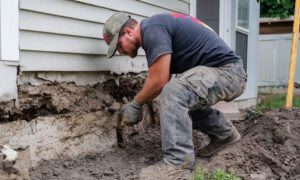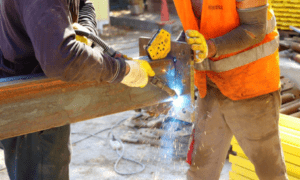Polyurea is the unassuming but high-quality polymer that has quietly been revolutionizing defensive coatings, sealing compounds, and artistic mediums. This artificial marvel has hastily ascended inside the world of polymer chemistry, presenting a mixture of energy, flexibility, and versatility unmatched using most different substances.
Unraveling the Chemistry Behind Polyurea
In its middle, polyurea is a subtype of polyurethane developed through the reaction of an isocyanate issue with a resin blend aspect. Its molecular shape contains a protracted series of organic gadgets linked by carbamate (urethane) hyperlinks. This easy association is the bedrock for more than a few top-notch material properties with great implications across industries.
Polyurea’s chemical composition presents numerous distinguishing characteristics:
- Rapid Curing: With remedy times as fast as a few seconds, polyurea eliminates the need for long drying intervals, notably growing operational efficiency.
- Extreme Durability: Polyurea stands as a paragon of energy, resisting punctures, tears, and abrasions with tenacity, even inside the cruelest environments.
- Chemical Resistance: It acts as an impenetrable barrier opposing a wide spectrum of chemical compounds, making it a preferred choice for containment solutions.
- Weathering Resistance: It keeps its color and house even below prolonged exposure to UV radiation, retaining performance in outdoor settings.
The unique combination of these capabilities makes polyurea an essential choice for protective coatings in sectors ranging from automotive and production to marine and military applications.
Why is polyurea better than epoxy?
When comparing polyurea with epoxy, a few key benefits emerge that make polyurea the superior choice for many projects. Firstly, polyurea dries incredibly quickly, often setting in just a few seconds to minutes, contrasting with epoxy, which can take several hours to fully cure. This fast curing time method has less downtime and quicker task completion and is particularly useful in excessive site visitor areas or when short upkeep is needed.
Polyurea also outshines epoxy in durability. It’s much more flexible, allowing it to take in higher effects and vibrations without cracking or peeling. This flexible approach to polyurea coatings can face up to huge temperature changes and movement without damage, making them best for environments experiencing extensive temperature swings.
Polyurea is notably resistant to chemical substances, water, and UV mild, allowing it to preserve its look and features through the years, even in harsh, out-of-doors, or business environments. Even though it is durable, epoxy does not offer an identical degree of resistance, mainly to UV light, which can cause it to turn yellow and degrade.
In summary, polyurea’s short drying time, advanced sturdiness and flexibility, and incredible resistance to chemical compounds, water, and UV light make it a higher choice than epoxy for many protective and sealing packages. Its properties ensure long-lasting performance in various situations, making it the pass-to alternative for many commercial, car, and production projects.
Polyurea’s Proliferation in Industrial Applications
The adoption of polyurea in industries has been rapid and large. In creation, it’s far-famed for its use in waterproofing structures, flooring, and even the lining of tanks and pipes. The automotive and aerospace sectors respect its versatility for noise discount, as a bedliner, and as an anti-corrosive coating.
Its role in preventing corrosion has especially solidified its position in protective systems. Traditional methods rely on frequent maintenance, whereas polyurea can offer a longer-lasting, maintenance-free safeguard.
Pioneering Growth in Structural Integrity and Beyond
One of the most significant advances enabled by polyurea is in the enhancement of structural integrity. When applied to building infrastructure or high-stress environments, it reinforces the material it bonds with, resulting in a more robust and enduring solution. Beyond structural applications, it is also being used in:
- Emergency repairs of various surfaces
- Seismic retrofitting for added resilience in earthquake-prone regions
- Hazardous waste containment, ensuring safe disposal
Art, Innovation, and the Polyurea Fusion
Polyurea’s story is one of relentless innovation. It has transcended traditional engineering domains, stepping into art and design. Renowned artists and designers have harnessed its unique properties to create stunning sculptures, exhibits, and architectural installations. The ability to materialize complex forms with speed and durability makes polyurea a medium of choice for those pushing the boundaries of creativity.
Polyurea and Artistic Expression
Artists have found in polyurea a conduit to express their vision without the constraints of traditional mediums. The material’s flexibility allows for the creation of intricate details, and its rapid curing enables artists to proceed swiftly through the production cycle. The end results are monumental sculptures and installations that captivate audiences worldwide.
Sustainable Polyurea: A Future-Focused Approach
Acknowledging the worldwide shift toward sustainability, the polyurea industry is also making strides. Manufacturers are developing formulations that are low in risky organic compounds (VOCs), thereby reducing environmental effects without compromising overall performance. Furthermore, its longevity and coffee renovation requirements make it an inexperienced choice for infrastructure, as it reduces the substances wished to restore and prolongs surface lifestyles.
The Green Narrative and Polyurea Applications
Emerging as an environmentally conscious material, polyurea is now at the forefront of waste management initiatives. Its incorporation in rehabilitating hazardous waste sites underscores its position as a protection and environmental stewardship tool.
Conclusion
Polyurea is more than a robust polymer; it is a testament to human innovation and adaptation. From the depths of industrial settings to the heights of artistic exploration, its impact continues to echo through every domain it touches.
In a world that demands resilience, polyurea stands out as a testament to humanity’s imagination, industry, and unyielding pursuit of breakthroughs that streamline and fortify the fabric of our existence. It is a material as dynamic as the technological and creative landscapes it inhabits, infusing hope and inspiration into the threads of innovation.
The consummate example of a resilient material, polyurea, is inspired by its indomitable strength and promise to shape a sustainable, secure future. In its evolution, we see a reflection of our potential to adapt, construct, and create – a true mirror of human ingenuity.



































